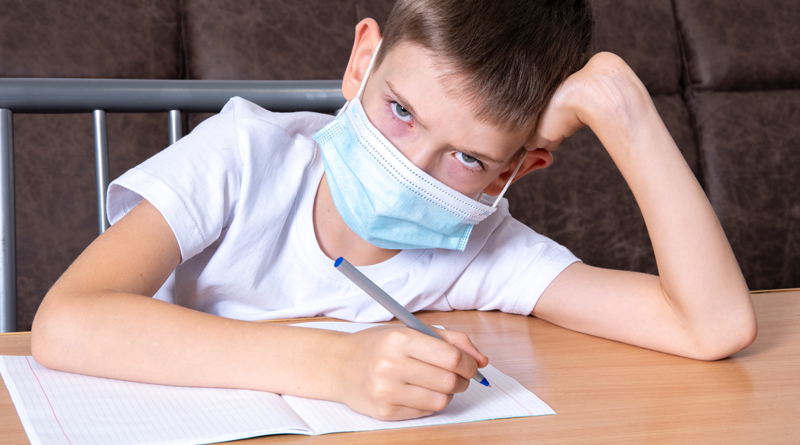How to address student regression in pandemic times?
By: Diana Bello Aristizábal
It is a fact that the closure of schools and the transition to online education, as a consequence of the pandemic, has had far-reaching negative effects on students. One of the most concerning ones is learning regression and an increase in the achievement gap.
On average, more than 70,000 students in South Florida have been academically impacted in one way or another. Some have dropped between 1 and 3 grades in their report cards, others attend less to school whether online or brick-and-mortar, while a group of students has disengaged from learning despite getting good grades.
Given this scenario, in which absenteeism, disengagement, and poor performance are the common currency, it is not surprising that a large number of students have started the current school year with learning gaps.
A recent report from the Northwest Evaluation Association (NWEA) estimates that students began the 2020-2021 school year with approximately 70% of their typical reading gains and less than 50% of the expected gains in math.
Of course, this varies depending on the grade, the student’s socioeconomic circumstances, access to technological environments, the language spoken at home, and even the learning style of each person.
For example, kindergarteners are going through a bit more critical situation. They began their school life behind a screen despite the fact that because of their age they needed face-to-face interaction to learn better.
For this reason, they represent one of the groups most affected by this pandemic, as shown in the 2020 fall report ‘Academic Accountability in M-DCPS’. According to it, although the majority of children began the year 2019-2020 with 1 grade below the average, by the first grade (2020-2021) many were already 2 grades below the average.
“In Kindergarten we have seen a very large decrease in enrollment and also in attendance,” says Christi Fraga, Miami-Dade County School Board Member for District 5, adding that other vulnerable groups are low-income families, Hispanics, and people of color.
According to a graph from the same M-DCPS fall report, while 32% of students in grades 3 to 8 belonging to the white population have dropped or remained at lowest level on iReady between the last period of 2019- 2020 year and the current one, this has happened with 45% of Hispanic students and 54% of black students.
 Students whose parents are unable to provide support for not being tech-savy or that have rigid jobs that force them to leave their children with a caregiver or, even, delegate the care of the little ones to their older siblings also have learning regressions, as well as students that lack an Internet connection at home.
Students whose parents are unable to provide support for not being tech-savy or that have rigid jobs that force them to leave their children with a caregiver or, even, delegate the care of the little ones to their older siblings also have learning regressions, as well as students that lack an Internet connection at home.
In the face of this, many questions remain in the air heading into the spring term for the thousands of parents who are unaware of how to help their children succeed academically or what strategies the district will use to support their efforts.
The value of in-person learning and targeted intervention
One of the lessons the pandemic left is that distance learning is not for everyone. “Some children adapt very well to homeschooling, but most experience a negative impact,” says Christi Fraga.
Sabina García, a family and couples therapist, has a similar opinion. She states that initially virtual classes were appealing to children but over time they became discouraging for many.
“Without the social factor between teachers and students, school has become boring because socializing has been a motivation for many to go to school. By removing this and also asking children to mute their microphones, some started disengaging from learning and, as a consequence, a lot of them began to fail grades,” says Sabina.
For all of the above, the school board prioritizes in-person learning. “Don’t be afraid to send your children to school. I know it is a difficult decision since many have been infected and have had to quarantine, but students hardly get infected at school. They suffer more at home because they experience social and academic regression,” says Fraga.
Having in mind precisely those children who have academic and social regression as a result of online learning is that the county requested the school board to submit a Spring 2021 Education Plan which was delivered on December 15.
The academic plan aims to create an intervention plan that allows to reverse the current rates, outlining seven assurances that must be met to maintain the two learning models, ensure that students are receiving the best possible education during the pandemic, and categorizes each student according to their level of regression and improvement areas, if applicable, in three levels.
Level 1 of the plan promotes accelerating student learning through standard support services such as contacting the parents of students who have excessive absences to assess what circumstances led to the lack of commitment and engagement.
At level 2 they will be encouraged to use computer assistance softwares such as Khan Academy, i-Ready, or Math Nation to reduce the gaps that may exist, while level 3 will focus only on students who urgently need more instructional time to catch up.
“It is an intense program through which we will identify the students who are behind and we will make an intervention demanding parents to send these children to school immediately because we know it is in their best interest,” explains Fraga.
Families that choose not to follow the above recommendation must submit a letter explaining they are aware of the student’s academic regression but wish to remain in online education.
However, in any case, several strategies will be put in place to monitor and intervene each underperforming student, like providing opportunities for an additional instructional time such as Saturday Academy, Winter Break Academy, and Spring Break Academy, tutoring before and after school, home visits, and teacher training in the face of the new upcoming challenges.
In addition, the district will be required to send monthly progress monitoring reports to parents that will include additional interventions the student may need, and will also provide semi-annual updates on the effectiveness of the intervention methods.
On the other hand, English learners will receive important support as well as students with disabilities, migrants, and those experiencing unstable housing.
Finally, among the many things that will be done proximately, is the development of a tool called ‘Universal Screening Criteria (USC)’ that seeks to identify students who are not making adequate progress in My School Online in order to later send written notifications to their parents and advise them of the risks associated with continuing the online learning modality.
But as the district’s plan unfolds, there are many things parents can do now to extend the support for their children. First, determine if they are ready to take online lessons. “If your child can’t sit in front of a computer for a long time to watch an educational video, doesn’t know how to operate it or turn it on, moves around in the chair, cries and stands up, it is clear that virtual learning is not working,” warns Sabina García.
It is also essential to provide emotional support by encouraging them to keep up the good work even when school becomes hard, review their grades every week as well as the assignments posted on virtual platforms, incentivate the love for learning through positive reinforcement instead of punishments, reduce the exposure time to screens during free time and avoid behaviors such as doing their homework for them.
The key is to create a teamwork between teachers, parents, students, and educational authorities to lessen the damage left by the pandemic and thus allow the academic level to return to normal rates in the future in addition to the students’ love for learning.

